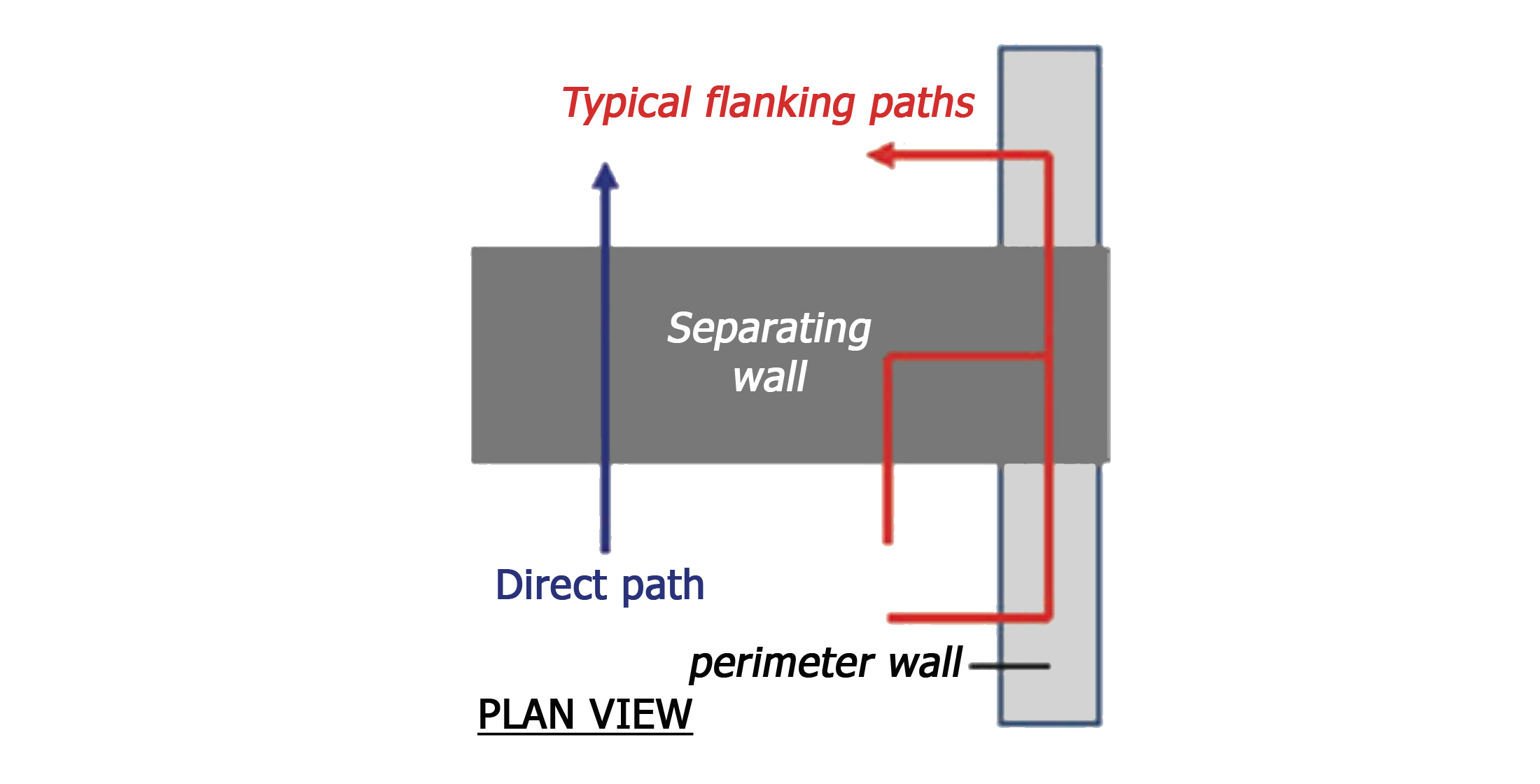Descriptors of sound insulation of building structures in residential buildings in Ukraine and Europe
DOI:
https://doi.org/10.15587/2706-5448.2022.265816Keywords:
architectural acoustics, sound insulation indices, European sound insulation standards, international sound insulation standards, norms of sound insulation levelsAbstract
The object of the research is the descriptors (indices/parameters) of sound insulation of construction structures of residential buildings.
The work presents a brief overview of modern generally accepted construction technologies in Eastern Europe. The most common sources of noise and the consequences of their impact on people's health and life have been studied. An analysis of the levels of airborne sound insulation indicators of building structures in European countries and Ukraine was carried out. Partitions for standard types of housing (private houses, townhouses, multi-story residential buildings) are considered. As a result, a great diversity of sound insulation requirements in different European countries was shown. And this leads to an imbalance and worsens the quality of connections in the construction sector, due to possible confusion and can cause certain problems in trade and exchange of experience. It is also shown that the difference between the numerical indicators of the sound insulation levels of air noise is not entirely appropriate within the EU, since the subjective indicators of the sound insulation of the population have approximately the same data. Comfortable conditions for people from different countries should be the same. Examples of descriptors of air noise sound insulation indicators of 35 European countries are given. Numerical norms of sound insulation levels of EU countries are detailed. General characteristics and differences between states are highlighted.
The paper also examines the diversity of housing types and the relationship between detached, semi-detached (terrace/terraced) and multi-apartment buildings in many countries. This allows for some approximations to calculate the number of neighbors in these countries with adjoining walls and floors in attached housing. Having data on European countries, a conclusion was made with similar characteristics used in Ukraine. On the basis of the obtained data, the strengths and weaknesses of the Ukrainian noise protection regulations were determined, which consist in a small variety of modern types of housing, taken into account in the building regulations, and in a relatively low general level of requirements for sound insulation of building structures. Finally, the quality of life aspect of building occupants and the importance of good design, construction and control are discussed. We hope that the work gained will be used to achieve the goal of creating European-level housing. The already mentioned topic will be of interest to noise and sound insulation specialists, acoustic engineers, ecologists, urban planners and city planners.
References
- Eurostat, Housing Conditions Statistics (2013). European Commission. Available at: https://ec.europa.eu/eurostat/statistics-explained/index.php?title=People_in_the_EU_–_statistics_on_housing_conditions&oldid=266849
- Smith, R. S., Wood, J. B., Mackenzie, R. G. (2005). Housing and Sound Insulation, Scottish Government. Edinburgh: Arcamedia, 309. Available at: https://www.gov.scot/binaries/content/documents/govscot/publications/advice-and-guidance/2020/02/housing-and-sound-insulation-improving-existing-attached-dwellings-and-designing-for-conversions/documents/housing-and-sound-insulation-improving-existing-attached-dwellings-and-designing-for-conversions/housing-and-sound-insulation-improving-existing-attached-dwellings-and-designing-for-conversions/govscot%3Adocument/Housing%2Band%2Bsound%2Binsulation-%2BA%2BGuide%2Bto%2BImproving%2Bexisting%2Battached%2Bdwellings%2Band%2Bdesigning%2Bfor%2Bconversions%2B.pdf
- Helimäki, H., Rasmussen, B. (2010). Airborne sound insulation descriptors in the Nordic building regulations – Overview special rules and benefits of changing descriptors. Baltic-Nordic Acoustics Meeting 2010. Bergen: SINTEF Byggforsk. Available at: https://vbn.aau.dk/ws/portalfiles/portal/61981916/AirborneSoundInsulationDescriptorsNordicBuildingRegulations_SpecialRules_Helimaki_Rasmussen_BNAM2010.pdf
- Hagberg, K., Rasmussen, B. (2010). Impact sound insulation descriptors in the Nordic building regulations – Overview special rules and benefits of changing descriptors. Baltic-Nordic Acoustics Meeting. Bergen: SINTEF Byggforsk. Available at: https://www.semanticscholar.org/paper/Impact-sound-insulation-descriptors-in-the-Nordic-–-Hagberg-Rasmussen/647e4774c85a57392757839860917653052ff323
- Smith, S., Baker, D., Mackenzie, R., Wood, J. B., Dunbavin, P., Panter, D. (2006). The development of robust details for sound insulation in new build attached dwellings. Journal of Building Appraisal, 2 (1), 69–85. doi: https://doi.org/10.1057/palgrave.jba.2940040
- Dіdkovskii, V. S., Lunova, S. A., Bogdanov, O. S. (2012). Arhіtekturna akustika. Kyiv: KPI, 23–25.
- Stansfeld, S., Haines, M., Brown, B. (2000). Noise and Health in the Urban Environment. Reviews on Environmental Health, 15 (1–2), 43–82. doi: https://doi.org/10.1515/reveh.2000.15.1-2.43
- Morrell, S., Taylor, R., Lyle, D. (1997). A review of health effects of aircraft noise*. Australian and New Zealand Journal of Public Health, 21 (2), 221–236. Portico. https://doi.org/10.1111/j.1467-842x.1997.tb01690.x
- Preamble to the Constitution of the World Health Organization as adopted by the International Health Conference (1946). New York. Signed on 22 July 1946 by the representatives of 61 states (official Records of the World Health Organization, No. 2, p. 100) and entered into force on 7 April 1948.
- World Health Organizatio. Available at: http://www.euro.who.int/
- Lang, J., Pierrard, R., Schönbäck, W. (2006). Sound Insulation in Housing Construction. Vienna: TU Wien, 106. Available at: https://www.isover.hr/sites/isover.hr/files/assets/documents/34-2.pdf
- Ofitsiinyi sait YeS. Available at: http://www.europa.eu
- Rasmussen, B. (2010). Sound insulation between dwellings – Requirements in building regulations in Europe. Applied Acoustics, 71 (4), 373–385. doi: https://doi.org/10.1016/j.apacoust.2009.08.011
- Rasmussen, B., Rindel, J. H. (2010). Sound insulation between dwellings – Descriptors in building regulations in Europe. Applied Acoustics, 71 (3), 171–180. doi: https://doi.org/10.1016/j.apacoust.2009.05.002
- Rasmussen, B. (2007). Sound Insulation of Residential Housing – Building Codes and Classification Schemes in Europe. Handbook of Noise and Vibration Control, 1354–1366. doi: https://doi.org/10.1002/9780470209707.ch114
- Rasmussen, B. (2012). Sound Classification of Dwellings – Quality Class Ranges and Class Intervals in National Schemes in Europe. EuroNoise 2012. Prague, 1178–1183. Available at: http://vbn.aau.dk/en/persons/birgit-rasmussen(c0e774a9-8cdf-410f-8727-6a2cc11a4f14)/publications.html
- Bida, D. V., Pushechnikova, T. P., Zaiets, V. P. (2020). Metody rozrakhunku zvukoizoliatsii bahatosharovykh konstruktsii. Mikrosystemy, Elektronika ta Akustyka, 25 (2), 50–56.
- Rasmussen, B. (2011). Sound insulation between dwellings – Overview of the variety of descriptors and requirements in Europe. Forum Acusticum. Aalborg, 5102–5109. Available at: https://d-nb.info/1215170386/34

Downloads
Published
How to Cite
Issue
Section
License
Copyright (c) 2022 Dmytro Bida, Vitalii Didkovskyi

This work is licensed under a Creative Commons Attribution 4.0 International License.
The consolidation and conditions for the transfer of copyright (identification of authorship) is carried out in the License Agreement. In particular, the authors reserve the right to the authorship of their manuscript and transfer the first publication of this work to the journal under the terms of the Creative Commons CC BY license. At the same time, they have the right to conclude on their own additional agreements concerning the non-exclusive distribution of the work in the form in which it was published by this journal, but provided that the link to the first publication of the article in this journal is preserved.








